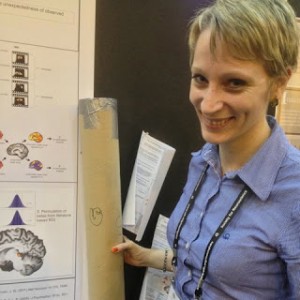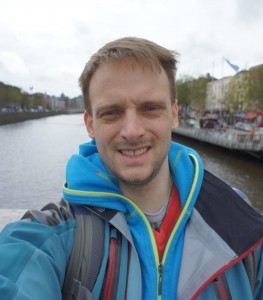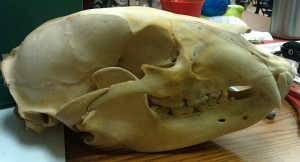Science For Six-Year-Olds (SFSYO for this school year) is a recurring segment on Science Decoded for Mrs. Podolak’s first grade class at Lincoln-Hubbard elementary school. This year the posts are inspired by #iamscience (also a Tumblr) and #realwomenofscience two hashtags on twitter that drove home for me the importance of teaching people who scientists are and what they really do.
Hello first graders! I’m so excited to introduce you to our December scientist of the month. Remember our November scientist, Philipp? Well he enjoyed telling you about what he does so much, that his sister Anne-Marike decided to join us this month to tell you all about being a neuroscientist. Like I did with Penny and Philipp I asked Anne-Marike some questions to find out more about what she does. I hope you will enjoy learning more about her. Below you can read our interview, and if you’d like to ask her any questions, be sure to leave them in the comments!
Erin: What type of scientist are you?
Ann-Marike: I’m a neuroscientist. This means I look at how our brains work. I’m interested in how the things we see and hear make the brain learn to expect what to see and hear. For example, when you listen to a song you know, you will know what sounds and words come next. I study what the brain does if we see something that surprises us: when does the brain change it’s expectations? For example, if your friend always sings a wrong line in a song, does your brain expect his errors?
Erin: What did you study in school, and where did you attend?
 Anne-Marike: I studied Psychology in Bochum in Germany and Neuropsychology in Masstricht in the Netherlands. I also did some work in a lab in Dunedin in New Zealand. After that I did my PhD in Neuroscience in Cologne in Germany. Erin: What type of scientist are you?
Anne-Marike: I studied Psychology in Bochum in Germany and Neuropsychology in Masstricht in the Netherlands. I also did some work in a lab in Dunedin in New Zealand. After that I did my PhD in Neuroscience in Cologne in Germany. Erin: What type of scientist are you?
Erin: Where do you work and what does a typical day at work entail?
Anne-Marike: I work in the Psychology department at Oxford University in England. I spend most of my time either at my desk or in a laboratory running experiments with my students. The experiments I do to study how the brain learns are very much like computer games. So when I’m at my desk I write these computer games or read about what other scientists who study similar things have done. Sometimes, I spend my time in a center where they have a scanner that I can use to see what the brain does during these computer games.
Erin: Why did you decide to become a scientist?
Anne-Marike: I think I loved biology at school and then decided to become a scientist early on, in my first year in college. Some of my friends think it’s the thing I’m cut out for and predicted that I would become a scientist when we were at school. They say I wouldn’t be as good at anything else, maybe they are right.
Erin: What is you favorite thing about your job?
Anne-Marike: I very much enjoy coming up with new theories that I can put to the test. I love deciding on questions and on how the questions could be answered. I find it very exciting to look at the results of my experiments, like the images of brain activity.
Erin: What is something about your job that might surprise us?
Anne-Marike: When you find something interesting and can try it out, then thinking about it is actually a lot of fun. I thought even writing my PhD thesis was a really cool thing to do.
Erin: What are some of your favorite things to do for fun?
Anne-Marike: I go horse-riding and sometimes play touch rugby. I try to spend a lot of time with my family and I meet my friends as often as I can. We often get into great discussions, that I enjoy. When I was still living in Cologne, I’d also spend a lot of time at the zoo.
***What do you think about Anne-Marike’s work as a neuroscientist? What do you think about the fact that she studies how the brain works using tests that are like computer games? I think she has a pretty great job, and has a good time being a scientist too! If there is anything you’d like to ask her about being a neuroscientist be sure to leave your questions in the comments!
For any of my adult readers, if you enjoy these posts and would like to be the scientist of the month yourself, send me an email or DM me on Twitter, I’d love another volunteer!






